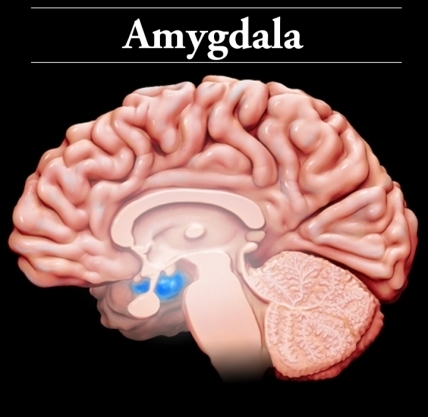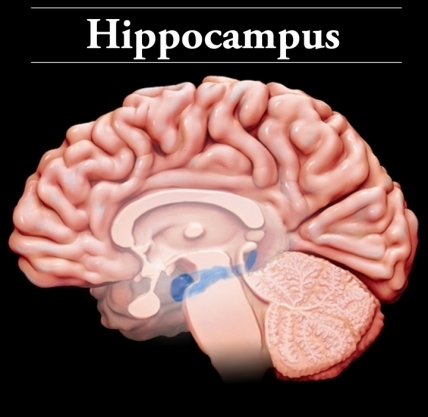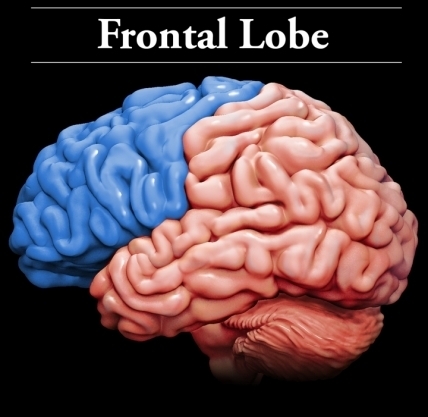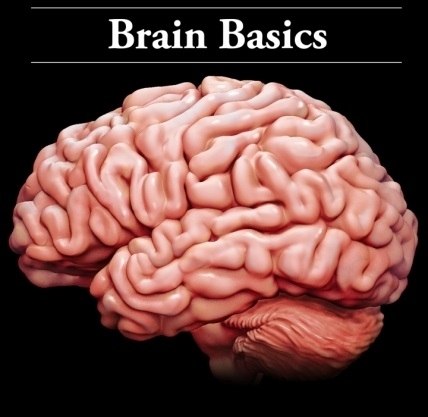
The amygdala is the brain's stress evaluator and decides when to react. When a traumatic event occurs, the amygdala:
- sends out a danger signal.
- initiates the "fight or flight" response.
- stores stimuli associated with memory such as sights, sounds, smells, etc.
- produces calming thoughts when there is no longer danger.
Effects After Traumatic Stress
Signs and symptoms of PTSD associated with the amygdala are:
- anxiety
- hypervigilance
- avoidance of stimuli associated with the trauma
- exaggerated tendency to be easily startled
- excessive amygdala activity
When a person develops PTSD, the amygdala has stored the sights, sounds, and smells associated with the event. If one or more of these stimuli are encountered, the amygdala will trigger a danger signal and prepare the body. The amygdala is believed to have a primary role in hypervigilance, which can be protective when a person is in a potentially dangerous situation. However, for those with PTSD, this can be counterproductive, since the amygdala remains overactive, and interferes with sleep or being able to let one's guard down in a safe situation.
Source: Michael Roy, MD, Col. (Ret.) What Parts of the Brain Are Impacted by PTSD?

The hippocampus is essential to memory formation. When a traumatic event occurs, the hippocampus:
- creates and stores the memory.
- retrieves the memory.
- calms the amygdala alarm circuit.
Effects After Traumatic Stress
Signs and symptoms of PTSD associated with the hippocampus are:
- confusion
- disorientation
- recurring thoughts, nightmares, and/or flashbacks
- difficulty sleeping
- reduced size of hippocampus
When a person develops PTSD, the hippocampus has a central role in the re-experiencing of the traumatic events. A traumatic memory could be involuntarily retrieved when triggered by a stimulus. These memories tend to be very strong, and the hippocampus seems to be overactive in those with PTSD. This combination makes it easy for these memories to be brought to the forefront both during times of wakefulness (essentially, a flashback) or sleep (a nightmare). Impaired sleep with frequent nightmares is among the most common and frustrating symptoms reported by people with PTSD. The hippocampus is unable to calm down the amygdala because the danger is perceived as real.
Source: Michael Roy, MD, Col. (Ret.) What Parts of the Brain Are Impacted by PTSD?

The prefrontal cortex lies directly behind the forehead within the frontal lobes and controls behavior, emotions, and impulses.
After a traumatic event occurs, the prefrontal cortex should let the amygdala know that it is okay to calm down once the danger has dissipated
Effects of Traumatic Stress
Signs and symptoms of PTSD associated with the prefrontal cortex are:
- irritability
- withdrawal features: numbing, avoidance, etc.
- reduced activation of prefrontal cortex
In those with PTSD, the prefrontal cortex is less active, which likely correlates with symptoms of social withdrawal, avoidance of reminders of the trauma, and emotional numbing. Therefore, the prefrontal cortex is unable to override the hippocampus, as it flashes the memory, so it cannot signal to the amygdala that there is no real danger.
Source: Michael Roy, MD, Col. (Ret.) What Parts of the Brain Are Impacted by PTSD?

To learn more about what happens when the brain is injured, please see the resource below:

Comments (8)
Please remember, we are not able to give medical or legal advice. If you have medical concerns, please consult your doctor. All posted comments are the views and opinions of the poster only.
Jordan replied on Permalink
If I didn't have Jesus Christ as the one who victoriously took suffering, evil, sin , death and hell on himself and resurrected; if I didn't have Him near me... I would have killed myself or overdosed a long time ago.
Anonymous replied on Permalink
Defense mechanisms: Aaron abke on YouTube changed my life. Suffered with ptsd entire life until I understood it. Hope this helps
Phylly NZ replied on Permalink
PTSD..always fighting that inner battle..the feeling of always being in danger..can never rest, not eating, sleeping, and its the same next day. Its lonely.
Renee B. replied on Permalink
Dear Dr.Roy
Thanks for the shared knowledge It helps regarding C-Ptsd . The Amygdala and training with social stimulus are beneficial. I've been also researching amino acids for restoring the regions mentioned. (Chronic stress etc )
Anonymous replied on Permalink
The data and information in the slides are from an interview with Michael Roy, MD, Col. (Ret.). Specifically, this portion of the interview: What Parts of the Brain Are Impacted by PTSD?
Dr. Roy is professor of Medicine and director of the Division of Military Internal Medicine at Uniformed Services University and director of Recruitment for USU's Center for Neuroscience and Regenerative Medicine.
Anonymus replied on Permalink
Who wrote this article?
Anonymous replied on Permalink
Hi there am des am 30 years old and have a few of these symptoms with the alertness and the ultra hearing abilities with anxiety and depression as well I have been diagnosed with turret sydome since the age of 16 can any one help me with relaxing strategy or something to narrow down these breakdowns I have this would be much appreciated thanks des
jeff replied on Permalink
thx for info